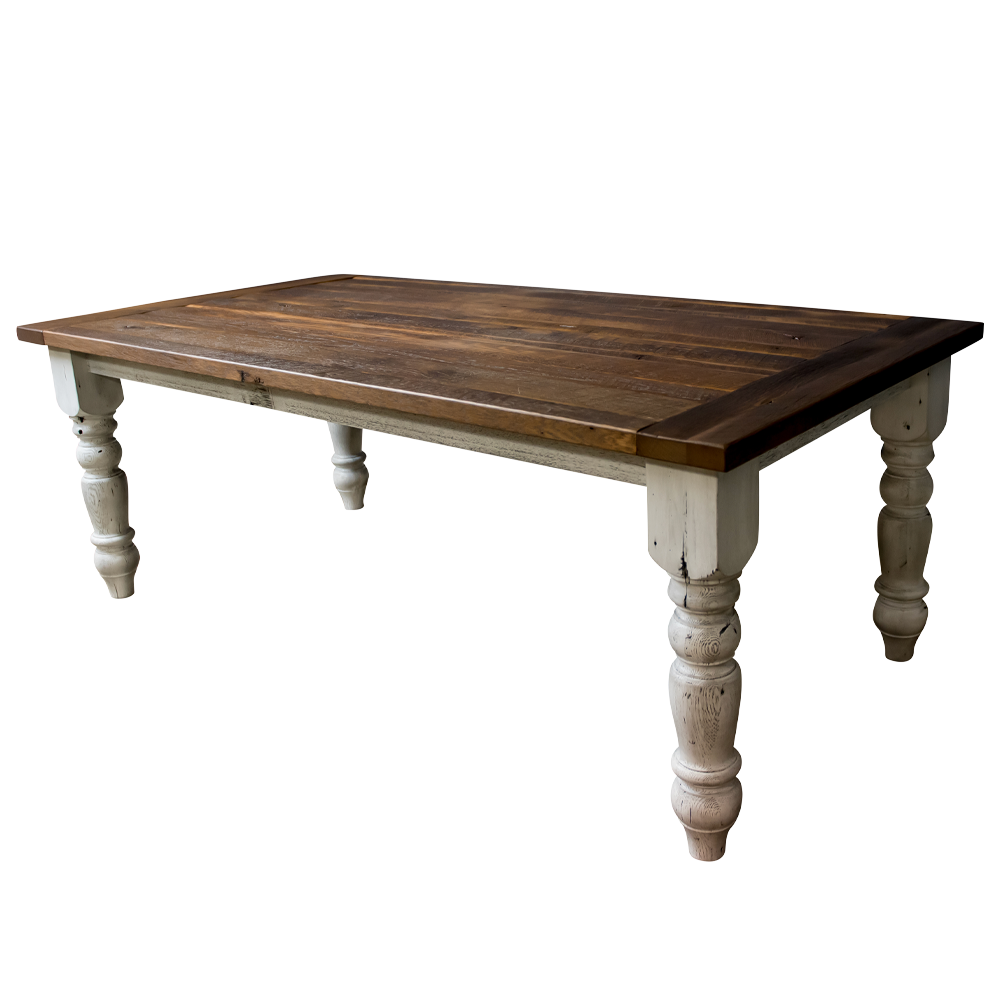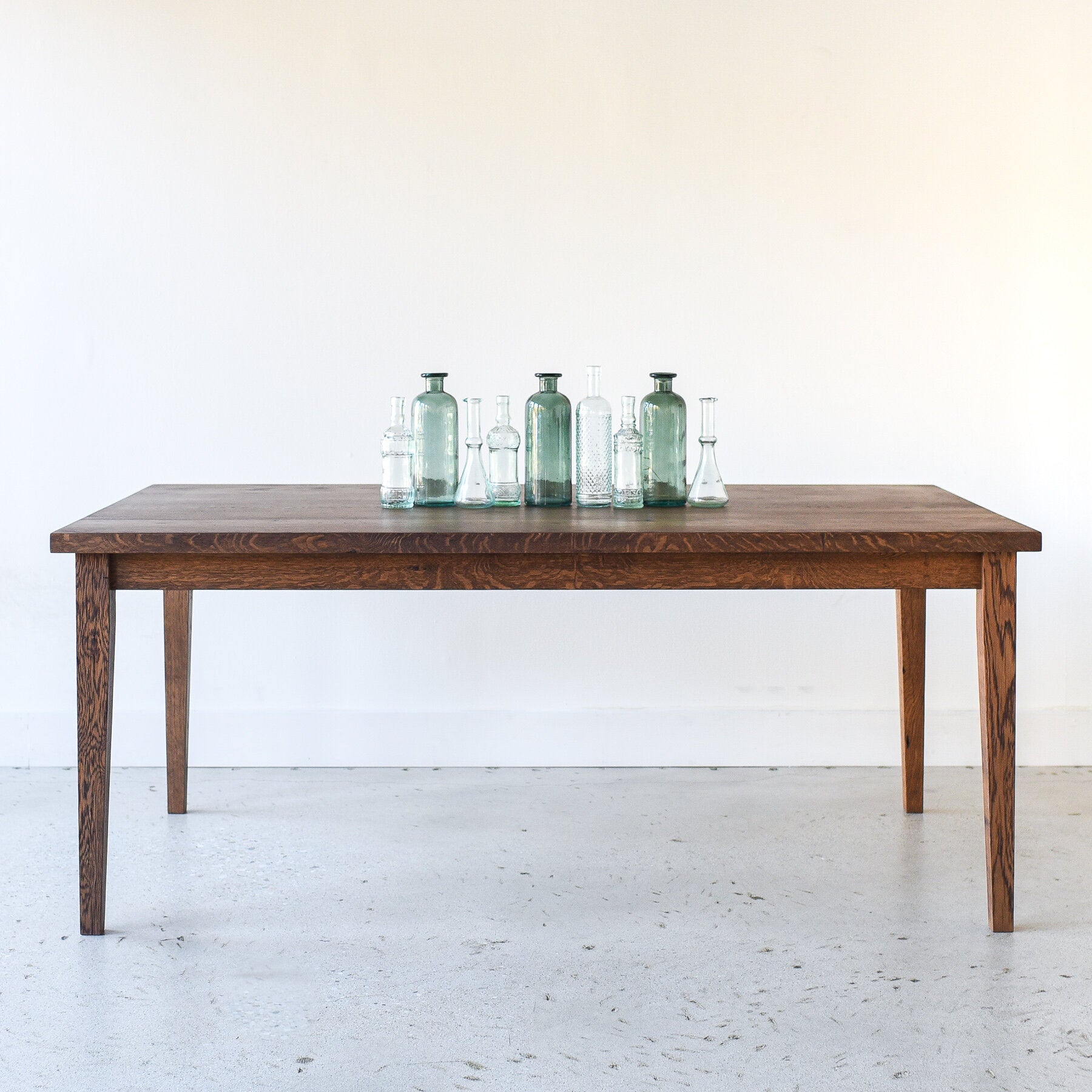Important Factors To Consider for Selecting the Right Table Legs Wood
Picking the ideal wood for dining table legs involves a nuanced understanding of various factors that influence both functionality and aesthetic appeal. The choice of timber kind, varying from durable woods to a lot more delicate softwoods, plays an essential function in making sure toughness and security. Each of these aspects can considerably affect the general experience of your dining space.
Importance of Timber Kind

Hardwoods, such as oak, walnut, and maple, are typically liked for their stamina and resistance to use. These sorts of wood provide a robust foundation that can withstand daily usage, making them optimal for eating tables that experience frequent celebrations. On the other hand, softer timbers like pine may be much more prone to scratches and damages, which might not be suitable for high-traffic areas.
Furthermore, the choice of timber can additionally affect the simplicity of maintenance. Some timbers need routine oiling or sealing to maintain their appearance, while others may be more flexible. Eventually, selecting the ideal timber type entails stabilizing aesthetic factors to consider with functional demands, ensuring that the eating table legs not only look appealing yet likewise stand the examination of time.
Examining Stability and Toughness
When examining dining table legs, one must take into consideration the security and strength they supply to the overall framework. The legs are vital in sustaining the tabletop and ensuring the eating experience is enjoyable and secure. A stable table is crucial for avoiding tipping or wobbling, which can bring about spills or accidents throughout meals.
The option of timber type dramatically affects toughness. Hardwoods such as maple, oak, and walnut are commonly much more durable and sturdy than softwoods like ache or fir. Additionally, the thickness and layout of the legs play an important duty; thicker legs or those with a conical design can use far better support and stability.

Aesthetic Considerations
While capability is paramount, the aesthetic allure of table legs can not be ignored, as they dramatically influence the total style and ambiance of the dining room. The choice of design, surface, and timber can boost or take away from the table's visual effect.

Surfaces additionally play an essential function in visual appeals. An all-natural coating can highlight the wood's innate appeal, while painted or stained legs can present shade and personality into the area. In addition, the proportion and scale of the legs about the table top and bordering furniture should be thought about to guarantee visual balance and cohesion.
Eventually, the table my latest blog post legs need to not just offer a functional purpose but also contribute to a cohesive and inviting environment, making them a crucial factor to consider in the general style of the eating location.
Maintenance Demands
To make sure durability and protect the appeal of wooden table legs, regular maintenance is important (Dining Table Legs Wood). Wood is a natural product that can be at risk to harm from dampness, warmth, and use. Establishing a routine treatment strategy will considerably enhance the resilience of your dining table legs.
Begin with normal cleaning using a soft, lint-free cloth to get rid of dust and debris that can scratch the surface area. For even more extensive cleaning, make use of a moderate soap service and damp cloth, staying clear of excess wetness that could permeate right into the wood. It is suggested to use a premium wood gloss or conditioner every few months to nurture the wood and maintain its gloss.
Furthermore, consider the setting where the table is placed. Stay clear of direct sunlight, as it can trigger fading, and use placemats or coasters to shield the surface from heat and dampness. Deal with any kind of dents or scrapes quickly with appropriate wood filler or touch-up pens to stop additional deterioration. By sticking to these upkeep demands, you will certainly not only maintain the aesthetic charm of your wood table legs yet also prolong their useful life expectancy.
Budget Plan and Expense Variables
Spending plan and cost factors frequently play a vital duty in the decision-making procedure for picking wood eating table legs. When reviewing alternatives, it is important to establish a clear budget that aligns with your overall furniture financial investment. The price of wood table legs can differ substantially based upon the kind of design, craftsmanship, and timber intricacy.
Hardwoods my website such as cherry, oak, and walnut normally regulate higher prices as a result of their longevity and visual charm. On the other hand, softer timbers like want may be more inexpensive but could not use the same long life. In addition, custom-made or artisan-crafted legs can incur added expenses, reflecting the skill and time bought their development.
It is also important to take into consideration the prospective lasting value of your investment. While deciding for lower-cost materials could seem monetarily prudent initially, they might call for more constant replacement or repairs, eventually enhancing total expenditure.
Consequently, balancing top quality and cost is crucial. Prioritize products that meet your visual choices while ensuring they fit pleasantly within your budget, permitting you to create a dining location that is both visually attractive and practical.
Verdict
To conclude, picking the suitable wood for dining table legs requires cautious factor to consider of different factors, including wood type, security, aesthetics, upkeep, and spending plan. Woods such as oak and walnut give exceptional longevity and stamina, while layout and thickness contribute to general stability. Aesthetic charm and maintenance needs must straighten with individual choices and way of life. Ultimately, a well-informed choice will improve the durability and aesthetic appeal of the eating table, ensuring satisfaction and functionality for several years to find.
Choosing the right type of timber for dining table legs is critical for both visual allure and architectural integrity. Eventually, picking the appropriate wood type entails stabilizing aesthetic considerations use this link with useful needs, making certain that the eating table legs not just look appealing yet additionally stand the examination of time.
It is recommended to apply a top notch timber gloss or conditioner every couple of months to nurture the timber and preserve its luster.
The cost of wood dining table legs can vary significantly based on the kind of style, wood, and craftsmanship complexity.
In verdict, choosing the appropriate timber for eating table legs demands mindful consideration of different aspects, consisting of timber kind, stability, visual appeals, upkeep, and budget.